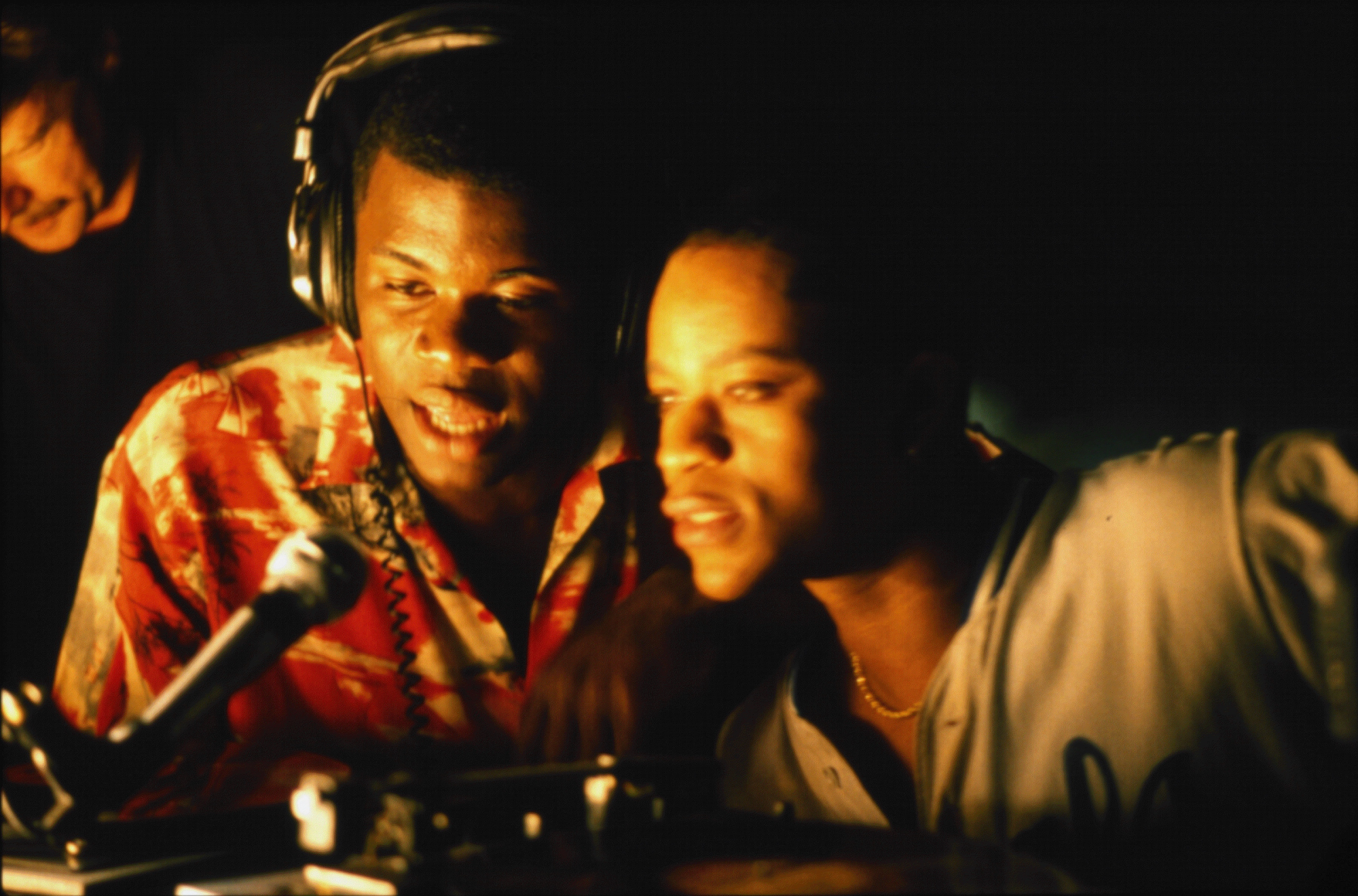When we think about British cinema, the films that come to mind tend to be heritage films, such as Downton Abbey, Lark Rise, and all of their predecessors. What often doesn’t come to mind is radicalism, protest, anger, and the struggle to process desire. All of this can be found in the work of Isaac Julien, an artist-filmmaker whose work defies every stereotype of British cinema and strives to challenge struggles that are ongoing even today.
Julien’s career began when he co-founded Sankofa Film and Video Collective, a group of filmmaker-activists who looked to capture, document, and give further voice to the rising unrest present among black communities in the 1980s. Their first film, Who Killed Colin Roach?, was made in 1983 and looked into the controversy surrounding the death of Colin Roach in Stoke Newington police station. The police claimed Roach’s death was due to suicide, however even the most basic evidence proved this wasn’t the case. Julien states that the aim of the documentary was to explore the way in which black culture and violence against black people was presented, doing so by presenting a radical and powerful to response to the riots caused by Roach’s death. This empowering and profound mode of filmmaking would become a staple of Sankofa films, producing a powerful catalogue of work that gives viewers an insight into the political ideas circulating through activist circles throughout the 1980s. Many of the ideas and ideals portrayed in the films being heavily influenced by a man who Julien himself has collaborated with; sociologist Stuart Hall. Hall was a key figure in the fight for social justice in Britain in the 1980s, and would work with Julien on two separate projects, with many ideas and beliefs expressed by Hall through his writing present in Julien’s work.
The first collaboration with Hall is widely considered Julien’s masterpiece, 1989’s Looking for Langston.The film investigates the life of Harlem renaissance poet Langston Hughes, whilst also examining the erasure of black queer figures from history, and the artistic canon. Hall features in the film as a narrator, with the cast of the film featuring another frequent collaborator of Julien, gay icon and Bronski Beat frontman, Jimmy Sommerville. The film depicts the balls of the 1920s as full on queer raves, mixing gay cultures past and present to create an aesthetic delight. Although rarely screened, Looking for Langston is without a doubt a masterpiece, and its luscious, softly sexual approach to expressing desire has gone on to inspire films such as Moonlight, and David Fincher’s iconic video for Madonna’s Vogue.

Moving towards a more conventional and narrative mode, 1991’s Young Soul Rebels looks at the events surrounding the Queen’s silver jubilee from the perspective of two young DJs. Young Soul Rebels looks at British subcultures as political expression, and how fashion, music, art, sexuality, and politics all intertwine throughout history to create portraits of events. Julien uses this film to paint a portrait of the silver jubilee that departs from the often-punk filled narrative, and focusing the film on the lives of queer and black people, a message the film’s pumping P-Funk soundtrack helps carry.
Both Young Soul Rebels, and the short film Julien would make the following year, The Attendant, would continue his exploration of black, gay, desire on screen. The Attendant, which once again features Sommerville, explores the spatial temporalities inside Wilberforce House in Hull, a museum dedicated to the history of slavery. Although rooted in reality, The Attendant sees Julien return the impressionistic aesthetics that featured in Looking for Langston. The film, though eight minutes in length, manages to evoke complex and potent ruminations on desire, transgression, and the erasure of black desire. Julien states in an interview with the Tate that his work is “very much a poetic quest for a language to express experiences which are part of the everyday experience of people like myself.” The cinematic language of The Attendant provides an incredibly lyrical insight into the experience of its protagonist, showcasing longing and reservation in a way that is almost unique to Julien’s cinema.

The latter part of Julien’s career as a more traditional filmmaker sees him delve more heavily into the realm of documentary cinema. His 1994 documentary, The Darker Side of Black examines the popularity of gangsta chic, hip-hop, and reggae in the mid-90s, drawing on a mix of cultural critics and artists to explore the role these genres play in black culture, and how the wider societal image of black culture holds up to its reality. The film, originally commissioned by BBC Arts Arena, harks back to Julien’s earlier documentary work with the Sankofa collective, and provokes provocative debate around black popular culture in the mid-90s. His following documentary, 1996’s Frantz Fanon: Black Skin White Mask once again sees him collaborate with Hall to produce a comprehensive portrait of the highly influential Martiniquais activist Frantz Fanon, through reconstructions, readings, and archive footage. Fanon, along with Hall and James Baldwin, is a key thinker in terms of understanding a lot of the ideas presented in Julien’s work. The film, through Julien’s trademark expressive approach explores his life not only as a writer, but as an active fighter in the struggle for black freedom. The film documents Fanon’s life as a spreader of hope, wisdom, and empowering knowledge, and is without a doubt a standout of Julien’s filmography.
Furthering his effort to provide historical work on black culture, Julien’s 2002 documentary BaadAsssss Cinema features a look into Blaxploitation as a genre, its legacy, and the cultural remnants it has left in American society. The film includes interviews with actors Fred Williamson, Pam Grier, Richard Roundtree, and Samuel L. Jackson, as well as directors Quentin Tarantino and Larry Cohen. Although perhaps one of Julien’s less experimental pieces, the film stands as an excellent text for those looking to explore the history of Blaxploitation, as well as providing an excellent starting point for those who would like to explore Julien’s work.
The final stop on this whirlwind tour of Julien’s single-screen work is Derek, a film made in collaboration with Tilda Swinton, which explores the life and legacy of the masterful director Derek Jarman through archive footage. Centred around a day-long interview with Jarman in the 1980s, the film is perhaps Julien at his most compassionate. Jarman was a pioneer of queer cinema, with his 1978 Jubilee almost certainly being a jumping off point for Julien’s Young Soul Rebels. The film is deeply emotive, elegiac in a way that only those who knew and understood some of Jarman’s struggles could be.

Julien has since been much more inclined to installation work, often making multi-screened films. One such example is Ten Thousand Waves, a multi-screen installation that weaves together stories from China’s ancient past and present, described as an “architectural installation” the work explores human migration, and journeys without an endpoint. His work has inspired countless filmmakers and is incredibly relevant today given the ongoing lack of visibility for black queer artists. His work, although often hard to track down, is absolutely vital viewing, and in retrospect just as (if not more) important and influential as some of his peers and idols. Speaking with the Tate on the current relevance of his work, Julien stated “One of the things which I’ve been involved in at the studio is working on my archive, and that entails us going back to early works and working out how to reconnect them to the present.” Hopefully in the future his work will become more readily available, allowing a future generation to delve into Julien’s efforts to depict the desires and struggles of black queer people throughout the last forty years.
All stills and clips courtesy of the official Isaac Julien website.


Leave a comment